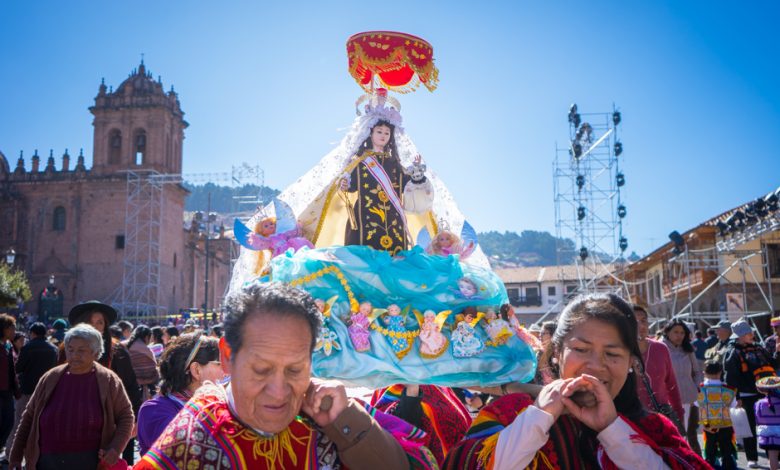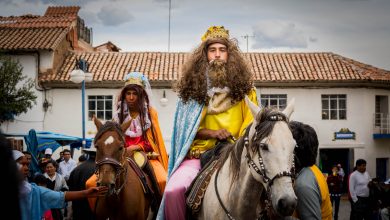
A purpose behind the Days of Cusco is to celebrate the provinces and folklore of the Department of Cusco, to strengthen it, codify it, and make it a strong part of the identity of the people of Cusco.
Paucartambo is one of the 13 provinces and is important for many reasons, not least of which is the fiesta in its town of the same name celebrating the Mamacha Carmen that has been declared National Heritage. Today, Cusco will make sure people realize it is strongly the heritage not only of Peru, nor only of Paucartambo but of the Region of Cusco.
The fiesta will be represented through a staging of key points through a pasacalle, a movement through the streets, a parade on the Plaza de Armas. It consists of at least twelve different dances, organized often by different troupes.

The dances with their representations and imagistic memories form a kind of code of life,, history, and contemporary culture in the department. They are organized and carried out by brotherhoods, many of long duration, whose members often live in the City of Cusco but go to Paucartambo to perform for the Mamacha.
Besides the dance troupes, there is a play between the virgin and the saqras who look like devils but have a strong relationship with the earth and fertility in its male characteristics. The saqra climb the roofs and balconies of the town to try to tempt her as she passes seemingly above it all through the town’s narrow, colonial streets.

Another ritual battle takes place, this one not nearly as simplified. It is between the Qhapaq Collas, who represent the llama traders of the highlands who bring gifts and merchandise, and the Qhapaq Chunchos of the lowlands.
Paucartambo is a place in between the highlands and the lowlands and this battle, called la guerrilla, pits the two sides of the province into a struggle which is also part of local mythology. Ritual battles are important in the fiestas of this part of the Andes and mark the idea that a place is divided into two who belong together but also constantly struggle with each other. Tension and unity. Both are important.
Finally, the feast involves a movement of people to the high gap that overlooks the eastern lowlands, for people to appreciate and watch the rising of the sun from the jungle. The details of the rise, different each year, can be seen as augeries for fortunes during the upcoming year.

The staging as pasacalle in Cusco will be a dramatization and responds to important pressures. The feast of Mamacha Carmen is tied to a specific place and time, Paucartambo, mid July. Nevertheless, as folklore and heritage it needs to be removable from context and made portable. It needs to be defined so it takes on an essences that can be performed all over the place and thus represent the department or the nation whenever they need it.
Beginning with Inti Raymi, dramatizations and the realization of portions of fiestas as performances for audiences that are staged in a bounded area that is not that of their normal existence, a stage, is increasingly important in Cusco. It makes the Region’s culture, not only a code, but also something performable and able to be judged.
Today’s pasacalle, carried out by private school children, will undoubtedly be enjoyable. The dances are intense and involved with stunning costumes and devotion. It will be a great morning in Cusco.




